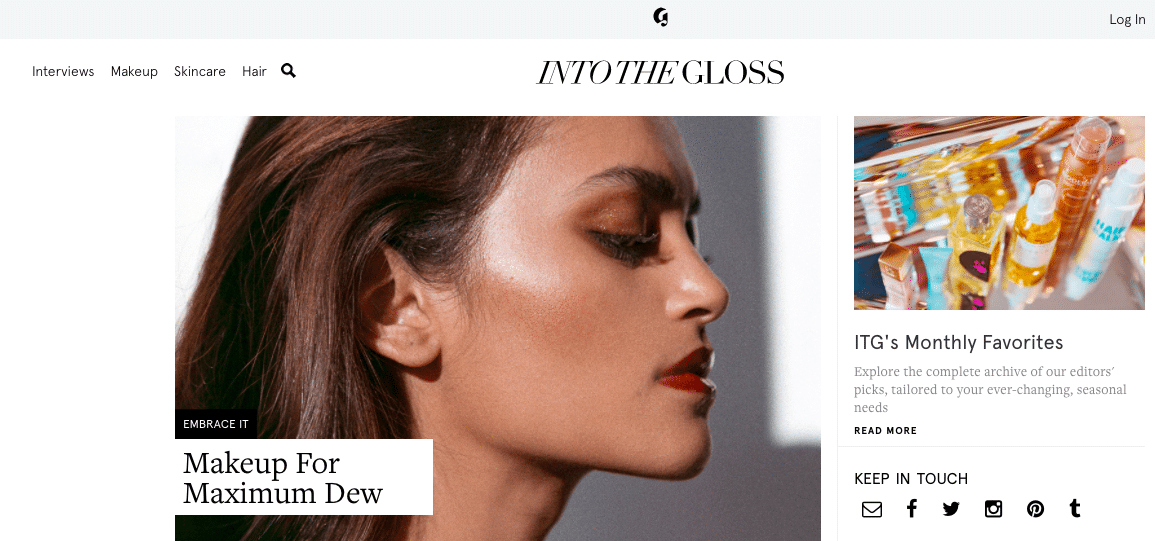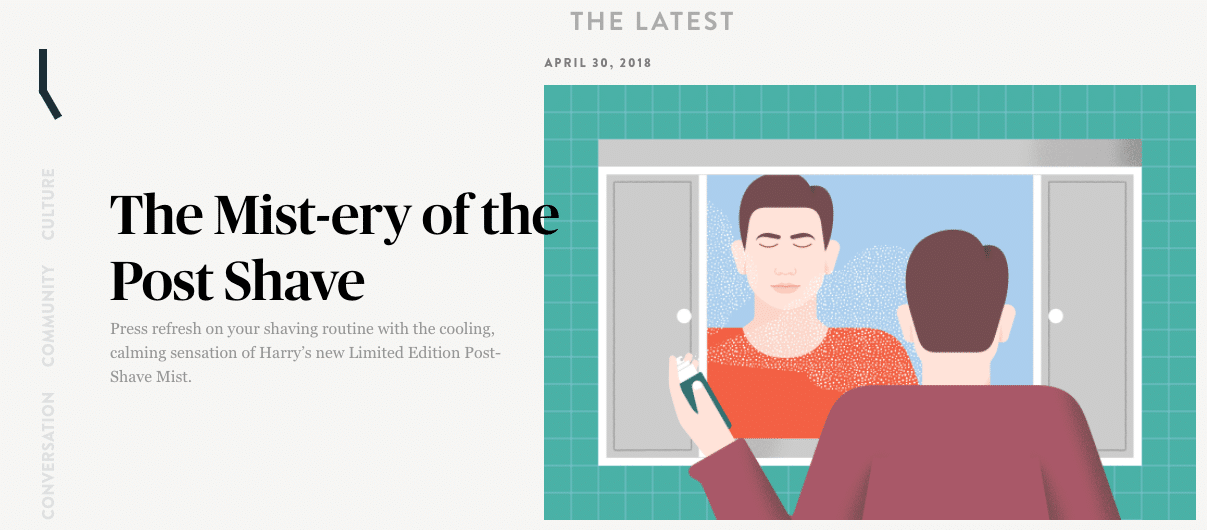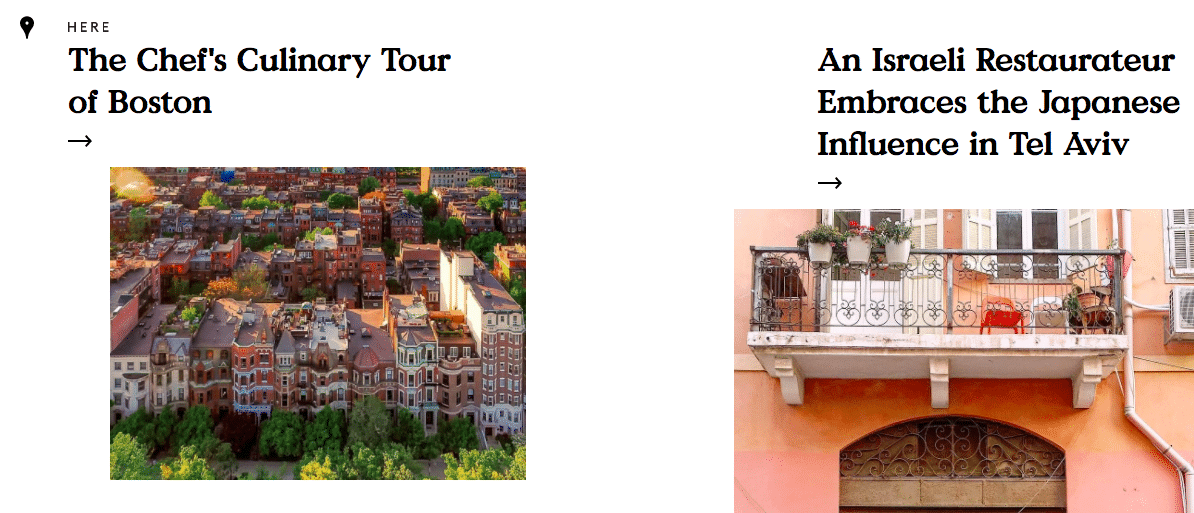With the plethora of channels and content marketing tactics and, well, content already out there, it’s hard for brands with even the most comprehensive content strategies to stand out. How do you create content that’s timeless and engaging, valuable on its own yet still promotes your brand and products?
For retailers, that all starts with a story. Ecommerce startups have been pioneering content programs that experiment with media that may not even be directly related to the product itself.
These brands, most of which started as direct-to-consumer brands aimed at Millennials, know content must offer more than just product plugs. For these content marketing superstars, content is the means to build community and lasting loyalty.
Let’s take a closer look:
Glossier – From Blog to Beauty Startup

Ask a city-dwelling woman in New York, Los Angeles, or London between the ages of 15-35 whether she’s heard of Glossier and chances are she’ll say yes. The brainchild of founder and CEO Emily Weiss, Glossier is the skincare and makeup brand, born from Weiss’s well-known and widely-read blog, Into the Gloss.
In the case of Glossier, the content came first. Weiss launched Into The Gloss as a way to interview trendsetters about their beauty routines and preferred products. From there, the site grew both in content, channels, and readership until it was time, Weiss felt, to launch her own product line. Using reader comments and feedback on the blog and social media, she sourced information about her audience’s favorite products, and learned where the market’s gaps were. In 2014, Weiss launched Glossier with four simple products: face mist, skin balm, priming moisturizer, and concealer.
Glossier products are “inspired by the people who used them and together with the content on Into the Gloss, is what the brand’s website calls “a people-powered beauty ecosystem.” And for Weiss, product and content are one and the same. In a 2017 interview with Fashionista, Weiss compared Glossier products to “pieces of content.” And the company as a whole as “a content company.”
Weiss’s strategy is paying off. Glossier recently raised another $52 million in funding, bringing total funding to $86 million. Weiss’s ultimate goal for Glossier is to provide “an outlook.”
“I hope that we become a symbol for being your own best expert and have your own opinion and narrative,” says Weiss, “and sharing that with others, sharing it with the world.”
Harry’s – A Shave and a Magazine for Everyday Guys

We’ve discussed how important – and effective – it is for today’s brands to be mission-driven to connect with consumers. Harry’s, a shaving company started by Jeff Raider and Andy Katz-Mayfield in 2013, has two missions: one, provide affordable, high quality shaves for every day men, and two, use thoughtful and engaging content to start a conversation around modern masculinity.
In an unlikely move for a razor company, Harry’s launched an online magazine called Five o’Clock for “everyday Harrys in pursuit of making today better than yesterday. It’s a place where we can discover new perspectives, and learn from each other’s experiences.” In line with both their missions, the magazine features profiles of men around the world who redefine notions of traditional masculinity.
Harry’s content strategies have been hugely successful by any content marketer’s standards. From gathering 100K emails in one week thanks to an engaging referral program to launching National Shave Day, Harry’s plays with a wide range of voice, tone, and emotions in content.
Harry’s has become the fastest growing online razor and blades brand, at 35% year-on-year, with $70M in estimated sales. And with the brand’s most recent injection of $112 million in funding, for a total of $474 million raised thus far, Harry’s has plans to take the brand beyond men’s grooming.
For Harry’s content marketing, it can only mean more interesting strategies ahead.
Away – The Luggage Company With a Travel Magazine

For the founders of successful luggage startup Away, their content strategy went beyond digital and into paper.
In December 2015, Away Co-founders Jen Rubio and Steph Korey wanted to begin building the Away brand using the insights and influencer statuses of in-the-know travelers. Away’s first line of suitcases wouldn’t be ready in time for the holidays, but the founders saw an opportunity to tell their story and get consumers excited. Rubio proposed a hardbound book that featured 40 writers, artists, and photographers from different industries, to share details about their favorite destinations.
The finished book was called “The Places We Return To,” and the founders sold it with a gift card that was redeemable for a suitcase in February – essentially “a preorder with a complimentary book.” When all 1,200 copies sold out, the founders knew they could count on strong storytelling and word of mouth to help push their product and were on their way to surpass $12 million in first-year sales.
Since 2015, the company has raised $31 million in funding and sold more than 300,000 suitcases to eager travelers. And since then, Away has only continued to expand content. In 2017 the company launched Here, a beautifully designed print and digital quarterly travel magazine, and “Airplane Mode,” a podcast that “explores the reasons we travel and places we find ourselves.” The brand’s social channels too, especially Instagram, with over 210k followers, features Away products in faraway destinations.
Away’s multichannel content strategy has won the brand an active and engaged community that’s purchased upwards of $48 million worth of luggage. For this growing travel brand, that’s definitely something to write home about.
3 Key Strategies to Keep in Mind
1. Think multichannel
To keep up with today’s shoppers, your content marketing should be omnichannel. Glossier began as a blog, then poured resources into social media marketing that included video and multi-media content. Away produced a podcast in addition to all of the brand’s digital content properties. And for Harry’s, an online magazine, social media channels , and TV spots made sure their content marketing footprint didn’t stop on any one channel.
2. Don’t be afraid to be real
And by real, we mean tangible. With Glossier’s launch of physical showrooms, the brand also moved into out of home OOH advertising. Away understood that the brand’s audience craved online connection but also valued slowing down and enjoying the handheld beauty of an old school magazine. So they launched a physical version of Here.
3. Explore different angles of your story
Like any good novel, your brand story could represent different things to different people, yet both stand the test of time and connect to a larger umbrella of values. Glossier, for CEO Emily Weiss, means both accessible beauty and self-empowerment. For Harry’s, the brand itself aims to redefine masculinity. And for Away, the brand’s core themes are travel, exploration, and individuality.
Become a Content King
Without the community it built through Into the Gloss, Glossier would have had a hard time distinguishing itself as a truly different beauty company, or even getting products off the ground. And while the market had a need for affordable yet high quality razors and suitcases, without compelling content to speak to their target customers, it’s doubtful that Harry’s or Away would have reached as many people and sold as much product as they did.
Remember that without a story, your brand is just a product. In order to truly connect with – and keep – your shoppers, your storytelling needs to go above and beyond any single channel or medium. By keeping these tips and brands’ content strategies in mind, you can take your brand’s story – and brand loyalty – to the next level.
Learn more about how to reach today’s shopper. Download our Retargeting 201 eBook today.























